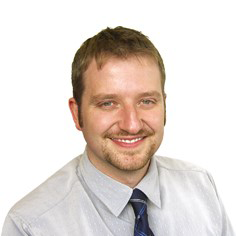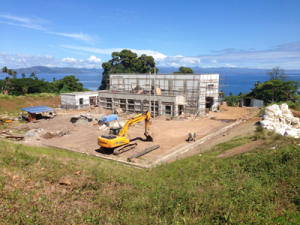 Andrew Bird is a senior hydropower engineer at MWH in New Zealand who specialises in the feasibility, design and construction and small to medium sized hydro and irrigation schemes. He has worked throughout the UK and Asia Pacific region and is currently the acting Asia Pacific Dams and Hydro Sector Leader.
Andrew Bird is a senior hydropower engineer at MWH in New Zealand who specialises in the feasibility, design and construction and small to medium sized hydro and irrigation schemes. He has worked throughout the UK and Asia Pacific region and is currently the acting Asia Pacific Dams and Hydro Sector Leader.
Nearly five years ago I moved to New Zealand to advance my career as a hydropower engineer. During that time I’ve had the opportunity to work around the Pacific and been fortunate to visit some of the most picture-postcard locations on the planet. These island nations are a place anyone would want to save, and the recent climate talks in Paris have shown light on the vulnerability of their existence.
On one of my most recent trips, I travelled to the Island of Taveuni to undertake an inspection of a mini-hydro scheme, currently under construction by the Chinese as part of a grant funding arrangement  between the Fijian and Chinese Governments. Fiji and other Pacific Islands have seen an influx of funding of projects like this one with a particular emphasis on the energy sector. The Pacific Islands recognise that while they may have little impact on climate change they are the first to be affected by its consequences. Rather than sitting idly by, these nations are leading the way and taking a pro-active approach to increasing their renewable energy generation that will result in reducing greenhouse gas emissions and their reliance on diesel and heavy fuel oil.
between the Fijian and Chinese Governments. Fiji and other Pacific Islands have seen an influx of funding of projects like this one with a particular emphasis on the energy sector. The Pacific Islands recognise that while they may have little impact on climate change they are the first to be affected by its consequences. Rather than sitting idly by, these nations are leading the way and taking a pro-active approach to increasing their renewable energy generation that will result in reducing greenhouse gas emissions and their reliance on diesel and heavy fuel oil.
These Island nation’s environments are delicate and have to withstand extremes including cyclones, earthquakes, droughts, floods and tsunamis. Last year I experienced this first hand while visiting the south side of Upolu Samoa, when I felt an earthquake hit making the hut I was in jump. This quake reminded me of the 2009 tsunami which devastated large areas of land on the island resulting in thousands of people being homeless. I spent the next hour watching the sea very carefully fearful of what may follow the quake I just felt. When these nations plan for the future they have to not only address climate change, but also plan for these potential natural disasters.
MWH has a proud history of working with our Pacific neighbours to address these very issues. Currently we are working on a number of projects on the Island of Samoa including the rehabilitation of three small hydro schemes which were devastated during a cyclone in 2012. This project co-funded by the Asian Development Bank, New Zealand Government and the European Union will also see the construction of four new hydro schemes which will assist in producing Samoa clean and green energy in the coming years. We are continuing to work with the Fiji Electricity Authority to achieve their renewable energy targets, having recently completed a number of new schemes, as well as, working with them on their medium to long term plan. We also currently manage Fiji’s Roads network, through the Fiji Roads Authority, implementing a large programme of works rehabilitation and reconstructing a vast network of transport infrastructure.
Of course there is always room for improvement and plenty that can be done better by us all to protect our environment and help us build a better world. Sometimes I wonder whether we should take a leaf out of the Pacific Islands though, and don’t try to save the planet, just try to save our own little bit of paradise – wherever that may be.
